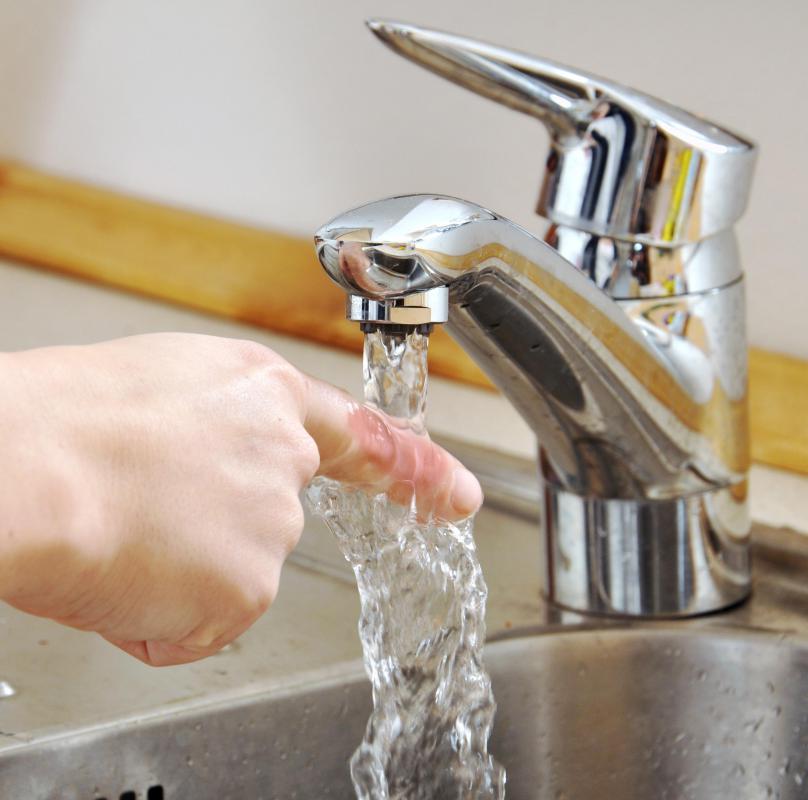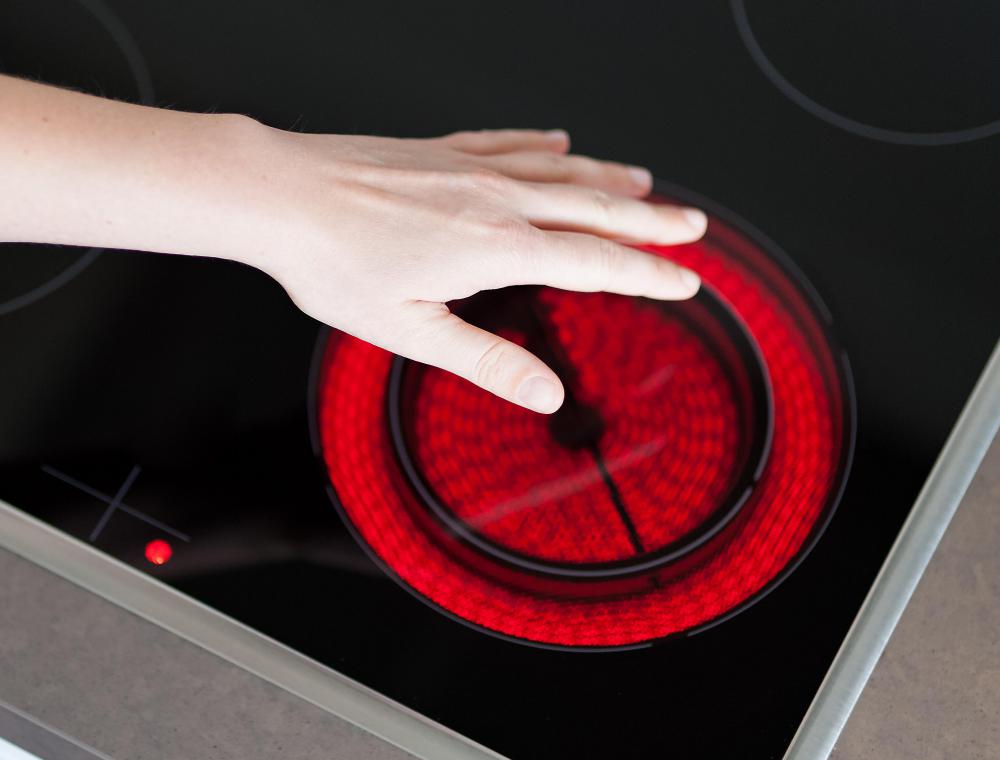At TheHealthBoard, we're committed to delivering accurate, trustworthy information. Our expert-authored content is rigorously fact-checked and sourced from credible authorities. Discover how we uphold the highest standards in providing you with reliable knowledge.
What are the Different Degrees of Burns?
Burns on the human body are classified into three different degrees: first, second, and third degree. First degree burns are the least severe, while third degree burns are the worst.
All burns generally come from exposure to extreme heat, which may include hot liquids like boiling water or cooking oil, from a sunburn, or from a fire. It is also possible to be burned by severe cold; these burns look much the same and are treated in similar methods to burns from severe heat. The variation in degrees of burns from one case to another can depend on the degree of heat or coldness, the physical proximity to the heat or cold source, and the amount of time exposed to the source.

The most minor burns only extend to the top layer of skin, the epidermis, which means that they will generally not leave a permanent scar. These burns can occur when a person momentarily touches a hot object like a stove or a radiator, but does not hold his or her body to the object long enough to sustain serious damage. The result of a first degree burn will be a temporary redness and soreness in the area affected.

Somewhat more serious is the second degree burn, which causes immediate redness and, within a day or two, will result in a blister that fills with pus. Unlike the other degrees of burns, second degree burns may be more or less painful depending on whether the burn affects the nerves.
The most severe type, the third degree burn, always causes lasting damage. In the most serious cases, the skin is charred and will separate from the body in a type of scab called an eschar. The victim is not in pain because the burns have destroyed the nerve endings in the skin. In cases where a person has received third degree burns and survived, cosmetic reconstructive surgery is often necessary, where a graft of skin will be taken from a healthy part of the person's body and stitched into a burned area.

By some accounts, there are three other degrees of burns, though they are not commonly discussed. Burns where the skin is irreparably damaged can be called fourth degree burns, burns where the muscle beneath the skin is also lost are called fifth degree burns, and burns where the bone itself is charred are called sixth degree burns.
AS FEATURED ON:
AS FEATURED ON:


















Discussion Comments
My mom was burned severely by an explosion in our home. She had 4th and 5th degree burns over 86% of her body and her toes were completely burned off. She lived like that for a week.
I was hospitalized this past August for a major second and third degree burn. Most small burns that bad will blister, but heal fine at home. A major burn is one that covers a large area of skin, is on a part that's in contact with other surfaces (like on your butt) and is larger than a half dollar and needs a doctor or ER trip. Mine covered my leg from my knee to ankle, and wrapped around most of my calf. It was from dropping a cup of water I'd just boiled for tea. I reflexively tried at catch it and sloshed it down my leg. I was in the burn ICU for just over a week, but didn't require skin grafts.
Here's a tip for any large burn like that: Grab a towel and soak it in lukewarm water instead of cold, then apply to your burn. It brings the skin down to a normal level slower, and that saves the skin from essentially being shocked by the cold water. It speeds up healing and lessens your chance of major scarring. I learned that even I was tiny and it saved my leg from needing skin grafts.
I got third degree burns and didn't go to the doctor because it was so small. But nothing happened.
You know, I never knew you could actually be burned by severe cold as well as severe heat. I thought the most dangerous thing that could happen in the cold was hypothermia, I guess I was wrong!
And actually, there are a few other things that can burn you besides just extreme heat. For example, you can get chemical burns from caustic chemicals. In those cases you don't get burned from any kind of heat, but from the chemicals. I believe even some common household chemicals can cause chemical burns.
@Monika - I'm glad your burn healed up okay, but as some of the other commenters have said, you probably should have gone to the doctor for burns treatment once it started to blister.
Anyway, I think it's kind of interesting that the reason some burns don't hurt is because the nerve endings have been destroyed. Usually when you get some kind of injury, the less it hurts, the better. But not the case with burns! If you can't feel anything, that just means the burn is severe.
It sounds like there is a big difference between first degree burns, which are minor burns, and third degree burns, where you actually burn through your nerve endings! Most first degree burns can be treated at home, but I'm sure most people who have third degree burns are hospitalized.
Actually, come to think of it, I bet most second degree burns can be treated at home as well. When I was in college I burned myself pretty badly by spilling chili on my hand in the dining hall. I ended up with a pus filled blister a few days later, but never bothered to go to the doctor. I took care of it and it healed fine on its own.
@Emilski - You are absolutely correct. If a burn starts to blister that means it is serious enough to go to the doctor even as a precaution because of the risk of infection.
The biggest risk someone faces with a semi- serious burn is that the blister could become infected once it pops.
This is why it is important for someone to use burn cream as well as clean the wound regularly to make sure that an infection does not occur on an already traumatized area.
I really feel like people think I overreact when it comes to burns, but I have the belief that one can never be too careful, as vast problems can occur if one ignores the problem.
@titans62 - You are correct. Anything worse than a 3rd degree burn pretty much mean that the person will not be able to keep the burned body part and there is usually a high mortality rate among people with these types of burns.
I myself have never had a 3rd degree burn, but I have been burned by an uncovered pipe right across my back, which proved to be a very painful second degree burn.
This was painful enough and caused enough damage that it was difficult for me to wear a shirt without the burn covered by some type of bandage to prevent friction on the raw part of the wound.
Even though this was not a very severe burn it is still something I probably should have gone to the doctor for and regret not going.
I strongly suggest that anyone who gets burned any worse than maybe a carpet burn find some burn cream and possibly consult a doctor if the burn starts to blister.
@Izzy78 - To answer your question any burn that is a third degree burn or worse will cause everlasting damage and it only gets worse the more severe it gets.
With third degree burns one can recover with extensive surgery in most cases. These usually include skin grafts that will allow the person to at least have skin in that area, but will look different and the person will have problems if they are still growing and will continue to have skin grafts throughout their life.
With a 4th degree burn these skin grafts become impossible as well as with a 5th degree burn which does not allow muscle to remain.
A 6th degree burn pretty much means everything has burnt away and to be honest I would be surprised if someone were still alive at this point and the rest of their body had not succumbed to the injury even if it was only to one appendage.
I have always known that there are three different degrees of burn, but I never thought there were three other types of burns that are even more severe than a third degree burn.
I have to be honest I really feel that if someone has received a 4th, 5th, or 6th degree burn they are risking probable amputation of a limb if this were to occur.
I really feel like if the bone was actually charred that the person would probably be dead long before it or in a state that they could be unresponsive or at absolute least be in shock.
I really have to wonder how many people are able to survive burns that are this severe and if there is a way one can fully recover from these types of severe burns.
Post your comments